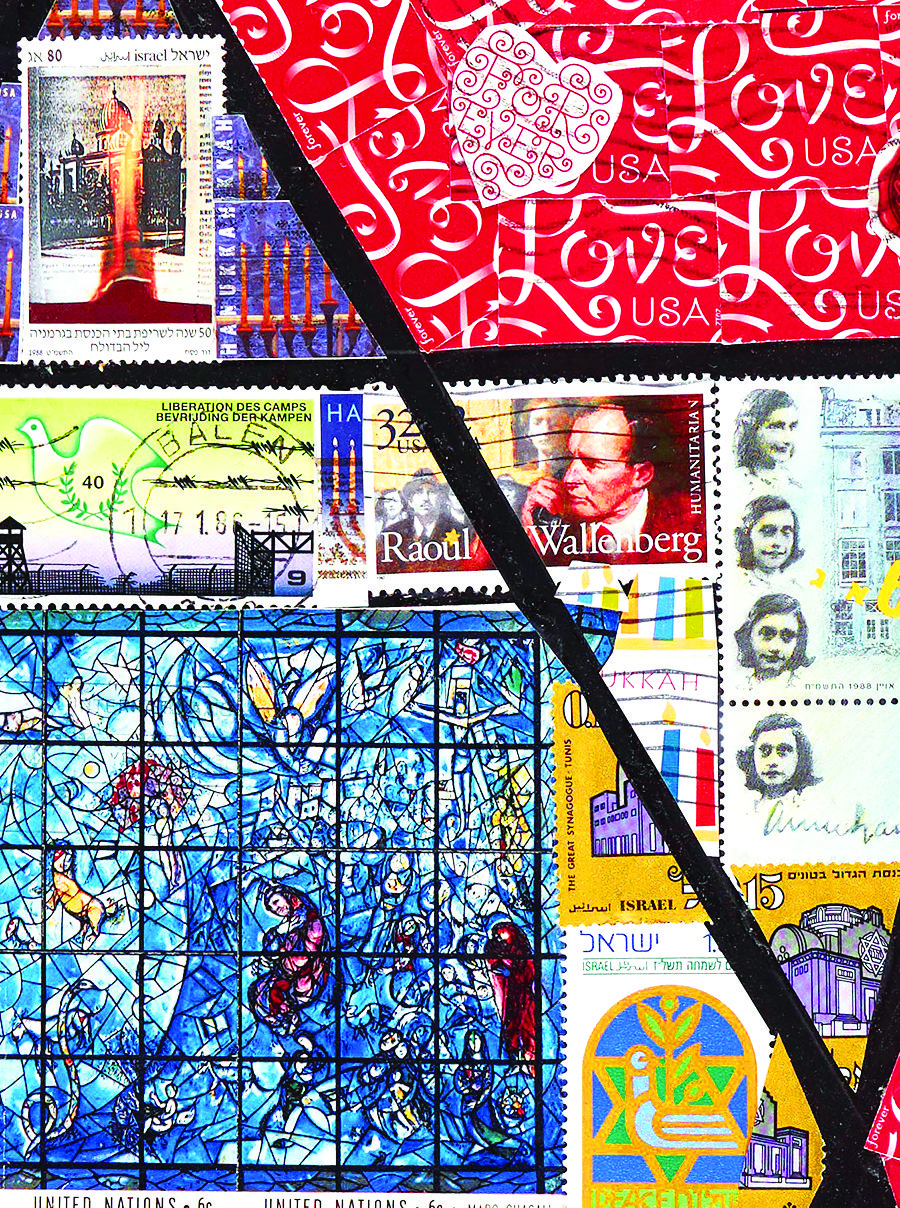The Holocaust Stamps Project finds a home in Pennsylvania
The Holocaust Stamps Project is on the verge of acquiring a permanent home for its 11 million stamps and the 18 collages fashioned from them.
A national stamp-collecting organization has agreed to give the project a permanent home at its Pennsylvania headquarters, said now-retired teacher Charlotte Sheer, who began the project at Foxboro Regional Charter School in 2009.
“The American Philatelic Society has made a commitment to accept the entire Holocaust Stamps Project collection, from which it will assemble a public exhibit at its headquarters in Bellefonte, Pa,” Sheer said in a news release.
The announcement came about two years after the project’s goal of collecting 11 million stamps was reached.
Sheer said that in the coming weeks, the executive director of the American Philatelic Society plans to visit the Foxboro school to collect the project’s inventory, which consists of “11 million postage stamps and 18 Holocaust-themed artworks assembled by kindergarten to grade 12 students.”
The project also includes documentation related to the evolution of the 10-year community-service learning project undertaken by the students and staff at the school, including student life adviser Jamie Droste, who took over from Sheer.
Sheer said that when the Society’s staff “have a tangible accounting of what it is they’ve got to work with, the real planning of the exhibit can begin.” As of now, she said, there is no target date for the opening of the exhibit in Pennsylvania.
Honoring the 11 million Holocaust victims was the primary objective of the project. “Every stamp honors the life of one man, woman, or child – 6 million Jews and 5 million additional individuals murdered by the Nazis during the Holocaust. The number includes 1.5 million children,” Sheer said.
At the height of the stamps project, the school was inundated with postage stamps from across the country and world.
In an interview for a story two years ago, Sheer described how the project eventually resonated in the school community.
“In our culturally diverse classroom, a seed of awareness was planted,” she said. “With a number so unfathomable, I challenged the class to try collecting one postage stamp for every person who perished in the Holocaust. Why stamps? They’re small and accessible.
“The intent was to use stamps as a symbol for something of value being discarded, as millions of people’s lives were thrown away by the Nazis.”
By June of that first year, the students had struggled to amass about 25,000 stamps – and were beginning to sense the immensity of the lives lost.
“Soon it developed into the Holocaust Stamps Project and became a regular component of the school’s Community-Service Learning program,” Sheer said.
She said that throughout the project, students donated, trimmed and counted stamps or worked on stamps-based collage artworks depicting the events and effects of the Holocaust. Hundreds of volunteers were enlisted to help count and sort the stamps.
Besides the exhibit in Pennsylvania, a display commemorating the project is being planned at the Foxboro school; details are still being worked out, Sheer said.
The American Philatelic Society traces its roots to 1886. The society and the American Philatelic Research Library bought and renovated a six-acre, 18-building complex in Bellefonte, Pennsylvania, for its headquarters in 2002.
LARRY KESSLER (lkessler1@comcast.net) is a freelance writer based in North Attleboro.











